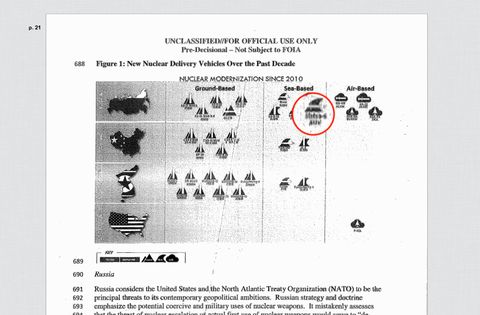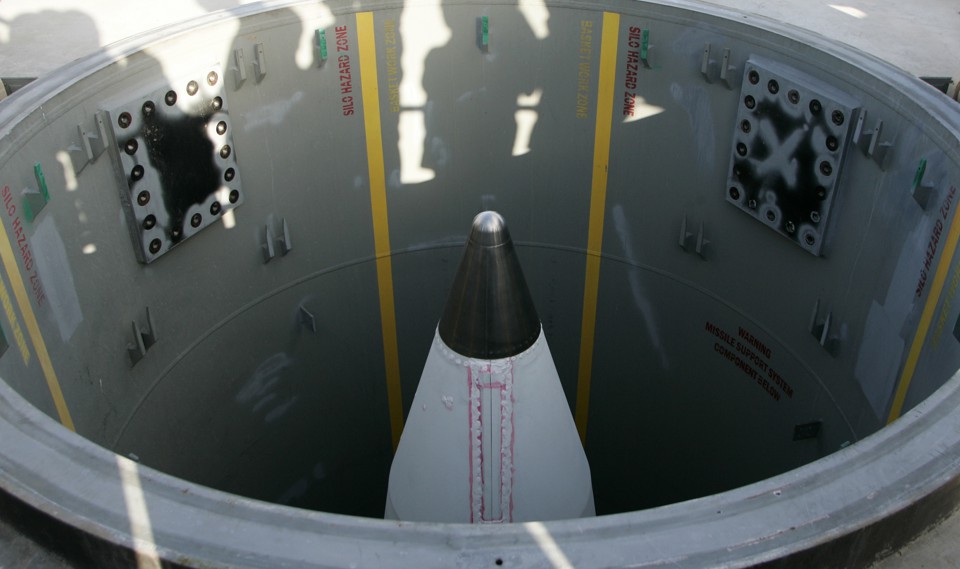Fake news should also include news that is not reported unless you go find it as cable news such as CNN does not cover it.
In the case of education, there has been some significant success, CommonCore is dead, at least at the agency. But there is still a privacy concern as well as legislation on the databases dealing with students and families.
U.S. Secretary of Education Betsy DeVos gave a far-ranging speech today in Washington at an American Enterprise Institute conference, “Bush-Obama School Reform: Lessons Learned.”
She announced the death of Common Core, at least in her federal agency.
DeVos also decried the federal government’s initiatives to improve education. “We saw two presidents from different political parties and philosophies take two different approaches. Federally mandated assessments. Federal money. Federal standards. All originated in Washington, and none solved the problem. Too many of America’s students are still unprepared,” she said.
And she touched on a favorite topic, school choice.
“Choice in education is not when a student picks a different classroom in this building or that building, uses this voucher or that tax-credit scholarship. Choice in education is bigger than that. Those are just mechanisms,” she said. “It’s about freedom to learn. Freedom to learn differently. Freedom to explore. Freedom to fail, to learn from falling and to get back up and try again. It’s freedom to find the best way to learn and grow… to find the exciting and engaging combination that unlocks individual potential.”
It was a long speech so I have edited it a bit here:
By Betsy DeVos
To a casual observer, a classroom today looks scarcely different than what one looked like when I entered the public policy debate thirty years ago…The vast majority of learning environments have remained the same since the industrial revolution, because they were made in its image. Think of your own experience: sit down; don’t talk; eyes front. Wait for the bell. Walk to the next class. Repeat. Students were trained for the assembly line then, and they still are today.
Our societies and economies have moved beyond the industrial era. But the data tell us education hasn’t.
The most recent Program for International Student Assessment, or PISA, report, with which you are all familiar, has the U.S. ranked 23rd in reading, 25th in science and 40th in math. And, you know this too: it’s not for a lack of funding. The fact is the United States spends more per pupil than most other developed countries, many of which perform better than us in the same surveys.
Of course there have been many attempts to change the status quo. We’ve seen valiant efforts to improve education from Republicans and Democrats, liberals, conservatives and everyone in between.
The bottom line is simple: federal education reform efforts have not worked as hoped.
That’s not a point I make lightly or joyfully. Yes, there have been some minor improvements in a few areas. But we’re far from where we need to be. We need to be honest with ourselves. The purpose of today’s conversation is to look at the past with 20/20 hindsight, examine what we have done and where it has – or hasn’t – led us.
With No Child Left Behind, the general consensus among federal policymakers was that greater accountability would lead to better schools. Highlighting America’s education woes had become an American pastime, and, they thought, surely if schools were forced to answer for their failures, students would ultimately be better off.
President Bush, the “compassionate conservative,” and Senator Kennedy, the “liberal lion,” both worked together on the law. It said that schools had to meet ambitious goals… or else. Lawmakers mandated that 100 percent of students attain proficiency by 2014. This approach would keep schools accountable and ultimately graduate more and better-educated students, they believed.
Turns out, it didn’t. Indeed, as has been detailed today, NCLB did little to spark higher scores. Universal proficiency, touted at the law’s passage, was not achieved. As states and districts scrambled to avoid the law’s sanctions and maintain their federal funding, some resorted to focusing specifically on math and reading at the expense of other subjects. Others simply inflated scores or lowered standards.
Where the Bush administration emphasized NCLB’s stick, the Obama administration focused on carrots. They recognized that states would not be able to legitimately meet the NCLB’s strict standards. Secretary Duncan testified that 82 percent of the nation’s schools would likely fail to meet the law’s requirements — thus subjecting them to crippling sanctions.
The Obama administration dangled billions of dollars through the “Race to the Top” competition, and the grant-making process not so subtly encouraged states to adopt the Common Core State Standards. With a price tag of nearly four and a half billion dollars, it was billed as the “largest-ever federal investment in school reform.” Later, the Department would give states a waiver from NCLB’s requirements so long as they adopted the Obama administration’s preferred policies — essentially making law while Congress negotiated the reauthorization of ESEA.
Unsurprisingly, nearly every state accepted Common Core standards and applied for hundreds of millions of dollars in “Race to the Top” funds. But despite this change, the United States’ PISA performance did not improve in reading and science, and it dropped in math from 2012 to 2015.
Then, rightly, came the public backlash to federally imposed tests and the Common Core. I agree – and have always agreed – with President Trump on this: “Common Core is a disaster.” And at the U.S. Department of Education, Common Core is dead.
On a parallel track, the Obama administration’s School Improvement Grants sought to fix targeted schools by injecting them with cash. The total cost of that effort was seven billion dollars.
One year ago this week, the Department’s Institute of Education Sciences released a report on what came of all that spending. It said: “Overall, across all grades, we found that implementing any SIG-funded model had no significant impacts on math or reading test scores, high school graduation, or college enrollment.”
There we have it: billions of dollars directed at low-performing schools had no significant impact on student achievement.
So where does that leave us? We saw two presidents from different political parties and philosophies take two different approaches. Federally mandated assessments. Federal money. Federal standards. All originated in Washington, and none solved the problem. Too many of America’s students are still unprepared.
Throughout both initiatives, the result was a further damaged classroom dynamic between teacher and student, as the focus shifted from comprehension to test-passing. This sadly has taken root, with the American Federation of Teachers recently finding that 60 percent of its teachers reported having moderate to no influence over the content and skills taught in their own classrooms.
Let that sink in. Most teachers feel they have little – if any — say in their own classrooms.
That statistic should shock even the most ardent sycophant of “the system.” It’s yet another reason why we should shift power over classrooms from Washington back to teachers who know their students well.
Federal mandates distort what education ought to be: a trusting relationship between teacher, parent and student.
Ideally, parent and teacher work together to help a child discover his or her potential and pursue his or her passions. When we seek to empower teachers, we must empower parents as well. Parents are too often powerless in deciding what’s best for their child. The state mandates where to send their child. It mandates what their child learns and how he or she learns it. In the same way, educators are constrained by state mandates. District mandates. Building mandates… all kinds of other mandates! Educators don’t need Washington mandating their teaching on top of everything else.
But during the years covered in your volume, the focus was the opposite: more federal government intrusion into relationships between teachers, parents and children.
First, we need to recognize that the federal government’s appropriate role is not to be the nation’s school board. My role is not to be the national superintendent nor the country’s “choice chief” – regardless of what the union’s “Chicken Littles” may say! Federal investments in education, after all, are less than 10 percent of total K-12 expenditures, but the burdens created by federal regulations in education amount to a much, much larger percentage.
The Every Student Succeeds Act charted a path in a new direction. ESSA takes important steps to return power where it belongs by recognizing states – not Washington — should shape education policy around their own people. But state lawmakers should also resist the urge to centrally plan education. “Leave it to the states” may be a compelling campaign-season slogan, but state capitols aren’t exactly close to every family either. That’s why states should empower teachers and parents and provide the same flexibility ESSA allows states.
But let’s recognize that many states are now struggling with what comes next. State ESSA plans aren’t the finish line. Those words on paper mean very little if state and local leaders don’t seize the opportunity to truly transform education. They must move past a mindset of compliance and embrace individual empowerment.
Under ESSA, school leaders, educators and parents have the latitude and freedom to try new approaches to serve individual students.
My message to them is simple: do it!
Embrace the imperative to do something truly bold… to challenge the status quo… to break the mold.
One important way to start this process is to make sure that parents get the information they want and need about the performance of their children’s schools and teachers. ESSA encourages states to be transparent about how money is spent, down to the school-building level.
Some states have developed information that is truly useful for parents and teachers. Others have worked just as hard to obfuscate what is really going on at their schools. To empower parents, policymakers and teachers, we can’t let “the system” hide behind complexity to escape accountability.
We must always push for better.
ESSA is a good step in the right direction. But it’s just that – a step. We still find ourselves boxed in a “system,” one where we are in a constant battle to move the ball between the 40-yard lines of a football field. Nobody scores, and nobody wins. Students are left bored in the bleachers, and many leave, never to return.
So why don’t we consider whether we need a new playbook?
That brings me to point number two. And, to finish the analogy… let’s call a new play: empowering parents.
Equal access to a quality education should be a right for every American and every parent should have the right to choose how their child is educated. Government exists to protect those rights, not usurp them.
So let’s face it: the opponents of parents could repeal every voucher law, close every charter school, and defund every choice program across the country.
But school choice still wouldn’t go away. There would still be school choices… for the affluent and the powerful.
Let’s empower the forgotten parents to decide where their children go to school. Let’s show some humility and trust all parents to know their kids’ needs better than we do.
Let’s trust teachers, too. Let’s encourage them to innovate, to create new options for students. Not just with public charter schools or magnet schools or private schools, but within the traditional “system” and with new approaches yet to be explored.
What we’ve been doing isn’t serving all kids well. Let’s unleash teachers to help solve the problem.
You know, I’ve never heard it claimed that giving parents more options is bad for mom and dad. Or for the child. What you hear is that it’s bad for “the system” – for the school building, the school system, the funding stream.
That argument speaks volumes about where Chicken Little’s priorities lie.
Our children deserve better than the 19th century assembly-line approach. They deserve learning environments that are agile, relevant, exciting. Every student deserves a customized, self-paced, and challenging life-long learning journey. Schools should be open to all students – no matter where they’re growing up or how much their parents make.
That means no more discrimination based upon zip code or socio-economic status. All means all.
It’s about educational freedom! Freedom from Washington mandates. Freedom from centralized control. Freedom from a one-size-fits-all mentality. Freedom from “the system.”
Choice in education is not when a student picks a different classroom in this building or that building, uses this voucher or that tax-credit scholarship. Choice in education is bigger than that. Those are just mechanisms.
It’s about freedom to learn. Freedom to learn differently. Freedom to explore. Freedom to fail, to learn from falling and to get back up and try again. It’s freedom to find the best way to learn and grow… to find the exciting and engaging combination that unlocks individual potential.
Which leads to my final point: if America’s students are to be prepared, we must rethink school.
What I propose is not another top-down, federal government policy that promises to be a silver bullet. No. We need a paradigm shift, a fundamental reorientation… a rethink.
“Rethink” means we question everything to ensure nothing limits a student from pursuing his or her passion, and achieving his or her potential. So each student is prepared at every turn for what comes next.
It’s past time to ask some of the questions that often get labeled as “non-negotiable” or just don’t get asked at all:
Why do we group students by age?
Why do schools close for the summer?
Why must the school day start with the rise of the sun?
Why are schools assigned by your address?
Why do students have to go to a school building in the first place?
Why is choice only available to those who can buy their way out? Or buy their way in?
Why can’t a student learn at his or her own pace?
Why isn’t technology more widely embraced in schools?
Why do we limit what a student can learn based upon the faculty and facilities available?
Why?
Now, I don’t have all the answers or policy prescriptions. No one person does. But people do know how to help their neighbors. People do know how they can help a dozen students here or 100 there. Because they know the students. They know their home lives. They know their communities. They know their parents. They know each other.
I’m well aware that change — the unknown – can be scary. That talk of fundamentally rethinking our approach to education seems impossible, insurmountable.
But not changing is scarier. Stagnation creates risks of its own. The reality is… we should be horrified of not changing.





 Kanyon is reportedly a very long range autonomous underwater vehicle that has a range 6,200 miles, a maximum depth of 3,280 feet, and a speed of 100 knots according to claims in leaked Russian documents.
Kanyon is reportedly a very long range autonomous underwater vehicle that has a range 6,200 miles, a maximum depth of 3,280 feet, and a speed of 100 knots according to claims in leaked Russian documents.


